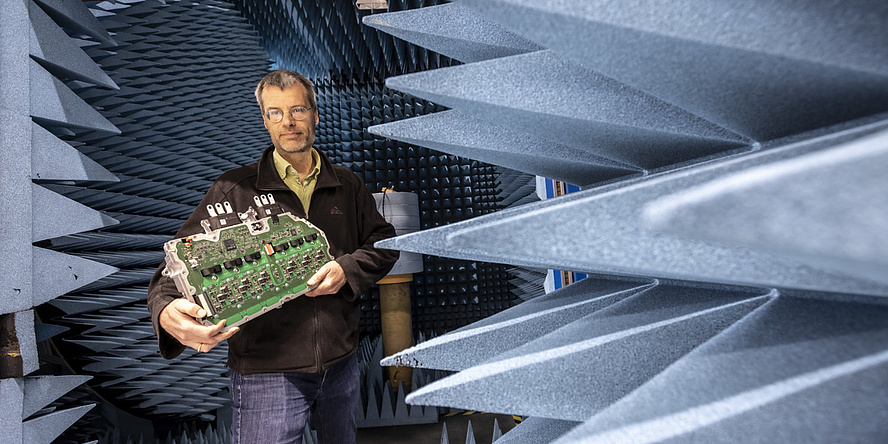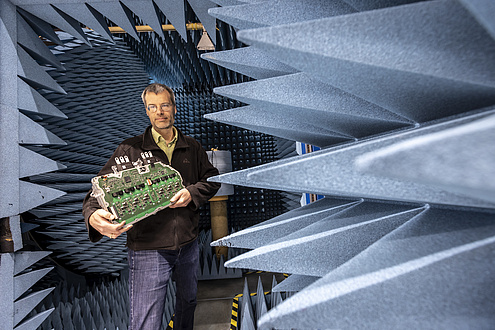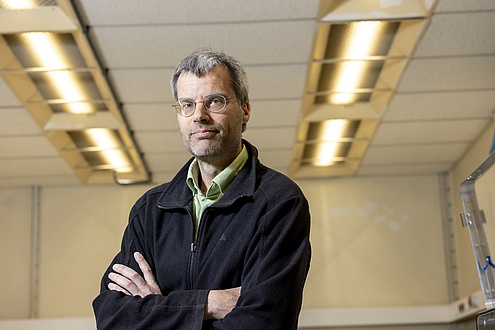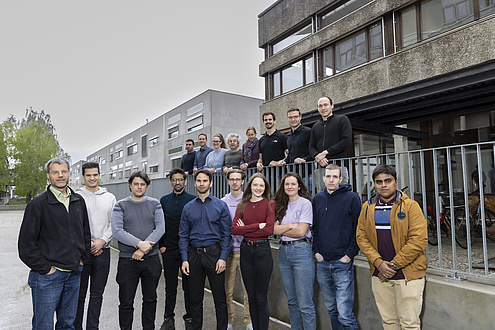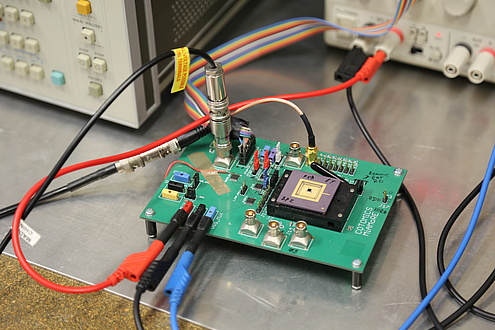Electrical components, such as semiconductors, are becoming smaller and smaller thanks to technological advances. However, this reduction in size makes them potentially more sensitive to external influences such as electrostatic discharges or electromagnetic emissions from other electronic components. This not only increases rejects in production, but can also lead to malfunctions or even failures within an overall system, such as a sensor within an electric drive unit. In the “Christian Doppler lab for electromagnetic compatibility-aware robust electronic systems”, which opened on May 16 and is funded by the Austrian Federal Ministry of Labour and Economy, a team led by laboratory head Jan Hansen from the Institute of Electronics at Graz University of Technology (TU Graz) is using modelling based on machine learning to eliminate these problems for components and systems and to put the solutions developed into practice.
Ministry of Labour and Economy promotes application-oriented basic research
Labour and Economy Minister Martin Kocher: “High reliability and trouble-free operation are key quality features of electronic products. This is vital in areas such as medicine and automotive engineering. There is already a wealth of experience on how to prevent the now numerous electronic systems from interfering with each other’s operation. The new CD lab will also use AI to help digitally record and analyse this wealth of experience and make the best solution available for a system design.”
Together with corporate partners BMW Motoren GmbH, Infineon Technologies Austria AG and Infineon Technologies AG, Jan Hansen and his team are focusing on two areas: the influences on electronic components during the design and manufacturing process and their optimisation as part of a larger system. “In production, a semiconductor passes through a production line with many working steps and sections where it can become electrostatically charged. If it is defective at the end of production, it is often difficult to determine the cause. In particular, the further miniaturisation of semiconductors presents us with new challenges. We are developing new physical models to describe the various effects in this process and uncover the sources of error,” explains Jan Hansen.
Fewer manufacturing errors and optimised drive units
Environmental conditions, such as humidity, also play a role in day-to-day operation. However, many of these parameters cannot be specifically determined. For this reason, models must be studied in a way dependent on the uncertainty of the unknown parameters. This was previously difficult to achieve with normal calculations because thousands or even millions of individual calculations had to be carried out. This process can be greatly accelerated using the machine learning approach. To create a machine learning model, a two- to three-digit number of training data is sufficient and once it has been calculated, the model can be analysed within milliseconds. This speeds up the analysis of the different result distributions by several orders of magnitude. “A machine learning model calculates so quickly that we can basically view it as a container of ready-to-use calculation results, like a database,” says Jan Hansen.
This approach to eliminating sources of error in production can also be used to optimise electronic vehicle drives. Numerous parameters and properties also come together here: mechanical parts of different sizes, semiconductors with different properties, high currents, electromagnetic emissions and many more. With machine learning and the container of parameters, researchers can break completely new ground in their search for the best possible configuration of the system. “That wasn’t possible before. The electromagnetic models are so complex that the model-based optimisation of a vehicle drive unit over a large range of parameters was impossible. The calculation of individual assemblies was no problem, but the entire drive unit could not be modelled with sufficient accuracy. It now becomes possible and we expect to use this method to optimise electronic systems in a wide variety of environments, even beyond individual drive trains,” says Jan Hansen.
About the Christian Doppler labs
In Christian Doppler labs, application-orientated basic research is carried out at a high level, with outstanding scientists collaborating with innovative companies. The Christian Doppler Research Society is internationally regarded as an example of best practice in promoting this collaboration. Christian Doppler labs are jointly funded by the public sector and the participating companies. The most important public funding body is the Federal Ministry of Labour and Economic Affairs (BMAW).
This research area is anchored in the Field of Expertise "Advanced Materials Science", one of five strategic foci of TU Graz.
Would you like to receive the latest stories, news, research stories, interviews or blog posts from TU Graz directly on your smartphone or in your email inbox? Subscribe to the TU Graz Telegram newsletter free of charge.
